Storm Daniel rained so much rain on Libya’s northeast that two dams fell, allowing water to flood into previously waterlogged districts, killing at least 2,000 people and leaving 10,000 missing. During a press conference in Geneva, Switzerland, on Tuesday, Tamer Ramadan, the leader of the International Federation of Red Cross and Red Crescent Societies delegation in Libya, revealed the number of missing people. “The death toll is huge,” she remarked.
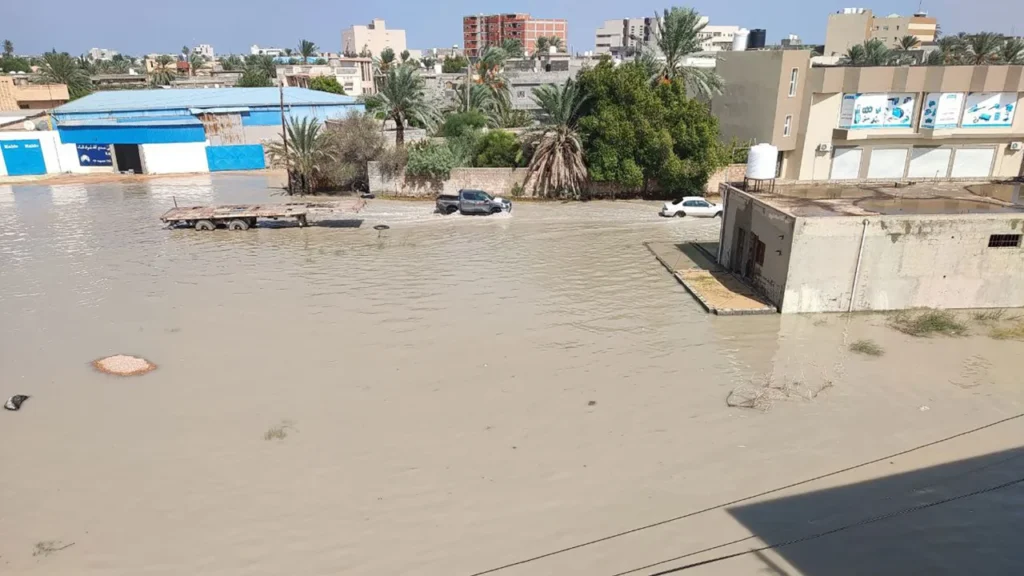
At least 145 of those slain were Egyptians, according to officials in Libya’s northern city of Tobruk on Tuesday.
According to Othman Abduljalil, health minister in Libya’s eastern administration, as many as 6,000 persons are missing in the eastern city of Derna, which has suffered the worst of the devastation. When he toured the city on Monday, he described the situation as “catastrophic.”
Authorities fear that entire communities in the city have been wiped away.
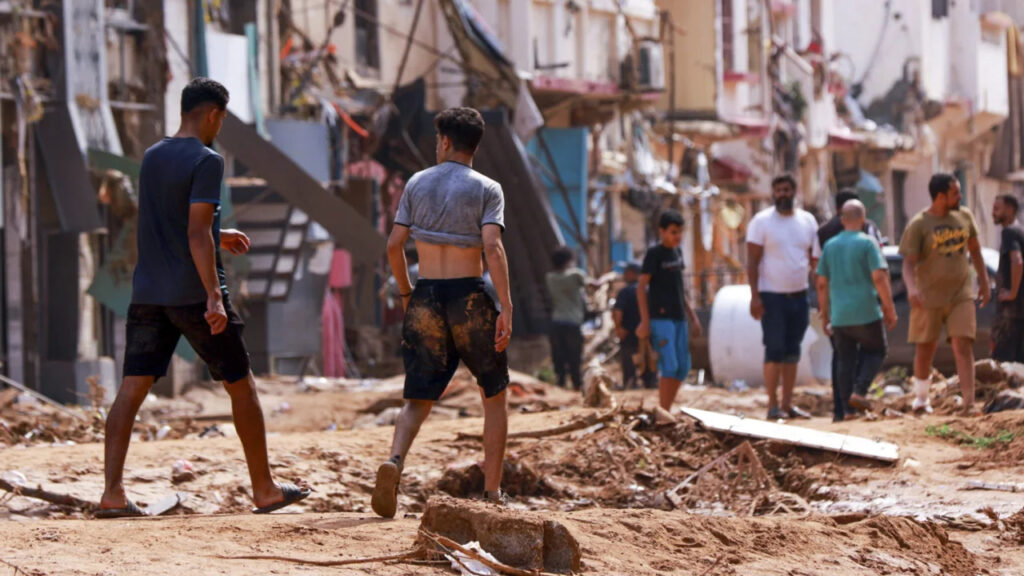
Hospitals in Derna are no longer operational, and morgues are packed, according to Osama Aly, a spokesperson for the Emergency and Ambulance Service.
Dead bodies have been left on the sidewalks outside morgues.
“There are no immediate emergency services.” “Right now, people are working to collect the rotting bodies,” said Anas Barghathy, a doctor who is volunteering in Derna.
‘We’re all scared.’
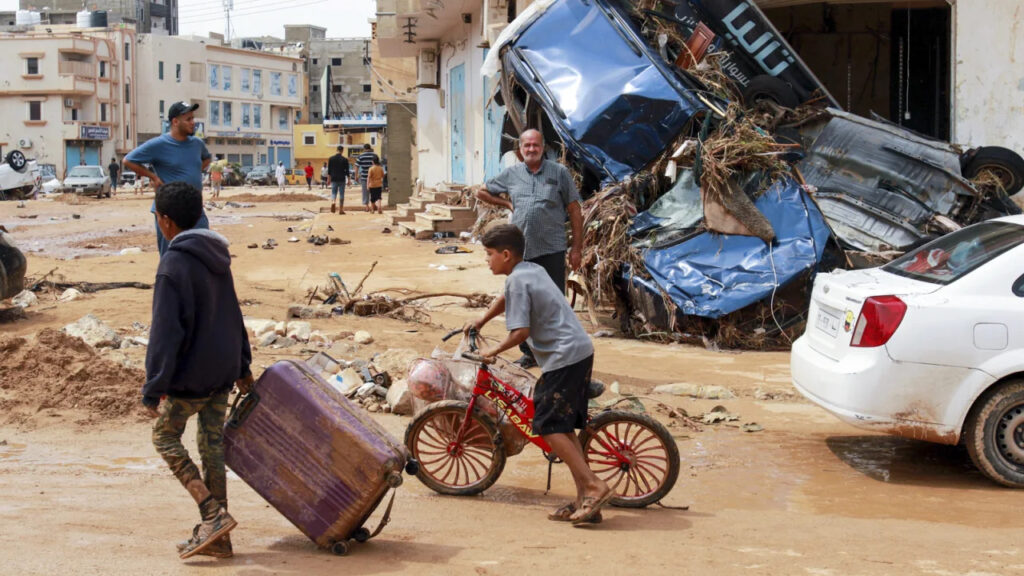
Relatives of those who lived in the ruined city of Derna told CNN they were afraid after witnessing flood recordings and hearing nothing from their loved ones.
Ayah, a Palestinian lady with Derna relations, claimed she had been unable to contact them since the floods. “I’m very concerned about them. Derna is home to two of my cousins. All communications appear to be down, and I’m not sure if they’re still alive. It’s terrible to watch the videos coming out of Derna. “We’re all terrified,” she admitted.
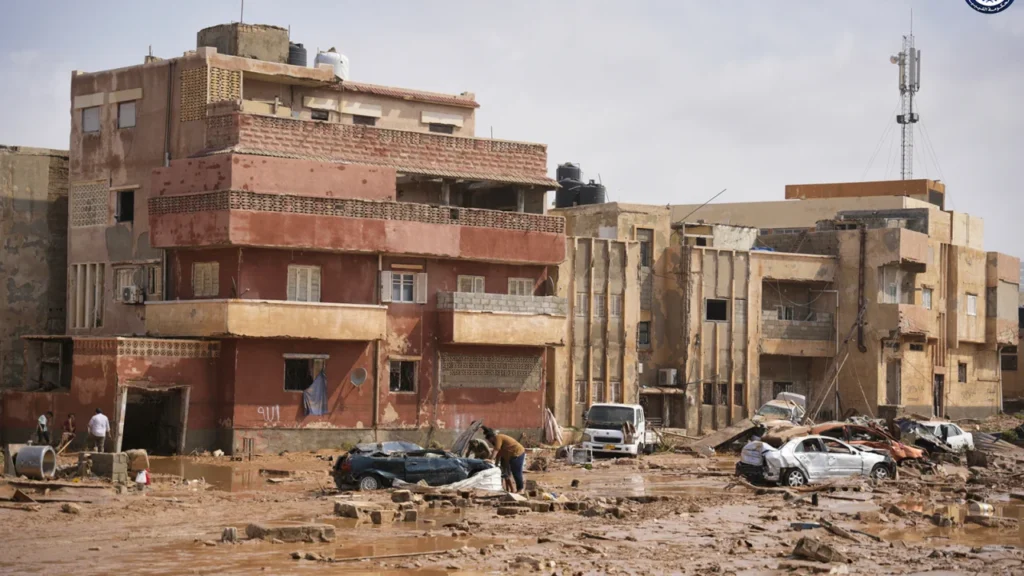
Emad Milad, a Tobrok local, reported eight of his family were killed in the flooding in Derma.
“Both my wife Areej’s sister and her husband died. His entire family is likewise gone. Eight people are no longer present. It’s a calamity. It’s a calamity. “We’re hoping for the best,” he stated on Tuesday.
Weather that is ‘ferocious’
The downpour, which has swept across many cities in Libya’s north-east, is the result of a very strong low-pressure system that caused catastrophic flooding in Greece last week before moving into the Mediterranean and expanding into a tropical-like cyclone known as a medicane. The terrible storm comes in the midst of an unparalleled year of climate disasters and weather extremes, ranging from destructive wildfires to suffocating heat.
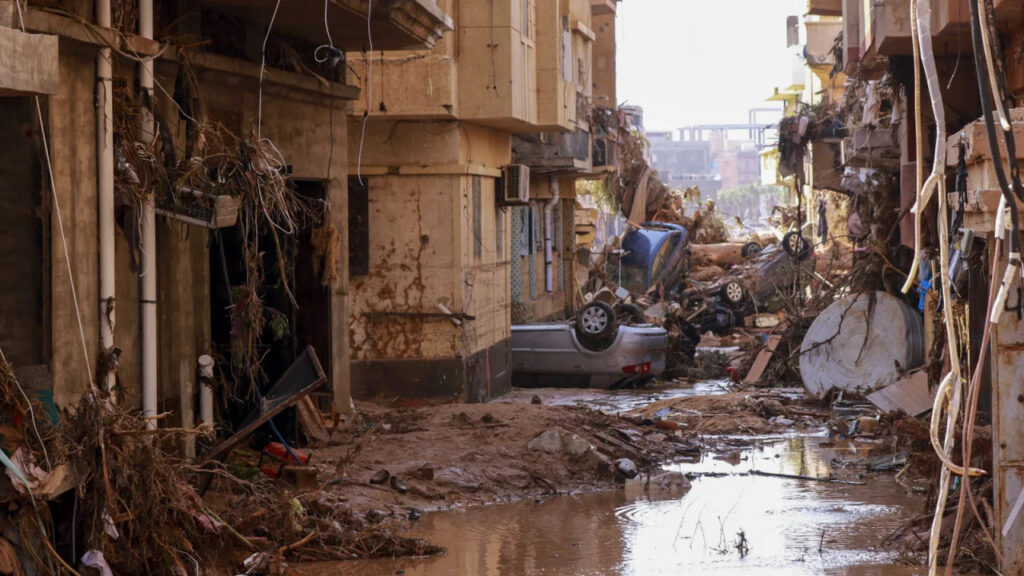
As global ocean temperatures surge due to global warming pollution, the Mediterranean’s temperature is considerably above average, which scientists say fueled the storm’s massive rainfall.
“Warmer water not only fuels those storms in terms of rainfall intensity, but it also makes them more ferocious,” said Karsten Haustein, a climate scientist and meteorologist at Leipzig University in Germany, to the Science Media Center.
The vulnerability of Libya to harsh weather is exacerbated by the country’s long-running political crisis, which has resulted in a decade-long power struggle between two opposing administrations.
The UN-backed Government of National Unity (GNU), led by Abdulhamid Dbeibeh, is based in Tripoli, northwest Libya, while its eastern competitor is commanded by commander Khalifa Haftar and his Libyan National Army (LNA), which backs the eastern-based parliament led by Osama Hamad.
Derna, located around 300 kilometers (190 miles) east of Benghazi, is controlled by Haftar and his eastern government.
Leslie Mabon, lecturer in Environmental Systems at The Open University, told the Science Media Center that the country’s complex politics “pose challenges for developing risk communication and hazard assessment strategies, coordinating rescue operations, and potentially for maintaining critical infrastructure such as dams.”
Dams have failed.
Authorities reported Tuesday that the collapse of two dams under the pressure of flooding, which brought water rushing towards Derna, caused devastating devastation.
“Three bridges have been destroyed.” “The flowing water washed away entire neighborhoods, eventually depositing them in the sea,” stated LNA spokesperson Ahmed Mismari.
Strong muddy currents carrying vehicles and debris washed away homes in valleys, according to Aly, a spokesperson for the Emergency and Ambulance Authority.
Phone connections in the city are down, hindering rescue attempts, and employees are unable to reach Derna due to the massive destruction that officials did not foresee.
“The weather conditions were not well studied, the seawater levels and rainfall were not studied, the wind speeds were not studied, and there was no evacuation of families who could be in the path of the storm and in valleys,” he stated.
“Libya was unprepared for such a disaster.” It has never seen such a level of devastation. “We admit there were flaws, even though this is the first time we have faced such a catastrophe,” Aly told Al Hurra.
‘Unprecedented floods,’ according to the media.
The storm is expected to be one of the deadliest in North African history.
According to a report from the state news agency Libyan News Agency (LANA), Libya is in a “unprecedented” position, according to Hamad, the chief of the eastern administration.
The floods have affected various cities, including Al-Bayda, Al-Marj, Tobruk, Takenis, Al-Bayda, and Battah, as well as the eastern coast all the way to Benghazi, according to Mismari, the LNA spokesperson. At least 37 residential buildings were washed out to sea.
“We are not prepared for such a scale of devastation,” Mismari admitted.
Libyan authorities require three sorts of specialist search teams, he says: teams to recover bodies from mountainous valleys after rivers dispersed them, teams to recover people from beneath rubble, and teams to rescue bodies from the sea. According to Mismari, tens of thousands of military men have been sent, but many flood-affected areas remain unreachable to relief workers.
September flooding in Libya is the second deadliest flood North Africa has seen in more than a century
The previous significant flood in Libya was in 2019, when four people lost their lives and tens of thousands were affected. But the scale of this one is unprecedented for the country.
Top 10 deadliest floods in North Africa since 1900
A bar chart showing death tolls of historical floods in North Africa
| MISSING: summary MISSING: current-rows. | ||
| Year | Country | Deaths |
| 1927 | Algeria | 3,000 3,000 3,000 |
| 2023 | Libya | 2,000 2,000 2,000 |
| 2001 | Algeria | 921 921 921 |
| 1995 | Morocco | 730 730 730 |
| 1994 | Egypt | 600 600 600 |
| 1969 | Tunisia | 540 540 540 |
| 2016 | Sudan | 171 171 171 |
| 2020 | Sudan | 155 155 155 |
| 2007 | Sudan | 150 150 150 |
| 2022 | Sudan | 146 146 146 |
As rescue workers rush to identify survivors under the debris and rubble, several governments and human rights organizations have offered assistance.
In the aftermath of the accident, the International Rescue Committee (IRC) declared that the country is facing a “unprecedented humanitarian crisis.”
The problems in Libya, according to Ciaran Donelly, IRC’s senior vice president for crisis response, “are immense, with phone lines down and heavy destruction hampering rescue efforts.” Climate change, he warned, had exacerbated the country’s “steadily deteriorating” status following years of warfare and instability.
According to Turkey’s Emergency Management Authority (AFAD), Turkish planes carrying humanitarian aid have arrived in Libya.
According to the state-run news agency Anadolu Agency, Turkish President Recep Tayyip Erdogan said on Tuesday that the country would send 168 search and rescue teams as well as humanitarian aid to Benghazi.
Italy is deploying a civil defense team to help with rescue operations, the Civil Protection Department announced on Tuesday.
The United States Embassy in Tripoli, Libya, reported that its special envoy, Ambassador Richard Norland, has issued an official statement of humanitarian necessity.
This “authorizes initial funding from the United States to support relief efforts in Libya.” “We are coordinating with UN partners and Libyan authorities to determine how to best target official US assistance,” the statement said on X.
According to state news agency, UAE President Zayed Al Nahyan has instructed the dispatch of help and search and rescue personnel, as well as condolences to those affected by the disaster.
Egypt’s President Abdel-Fattah El-Sisi also expressed sympathy to Libya. “I wish the injured a speedy recovery, and I hope that the crisis will pass quickly with Libyans standing together in unity,” El-Sisi stated in a social media message. The storm peaked in northern Libya on Monday, according to a World Meteorological Organization statement citing Libya’s National Meteorological Centre.
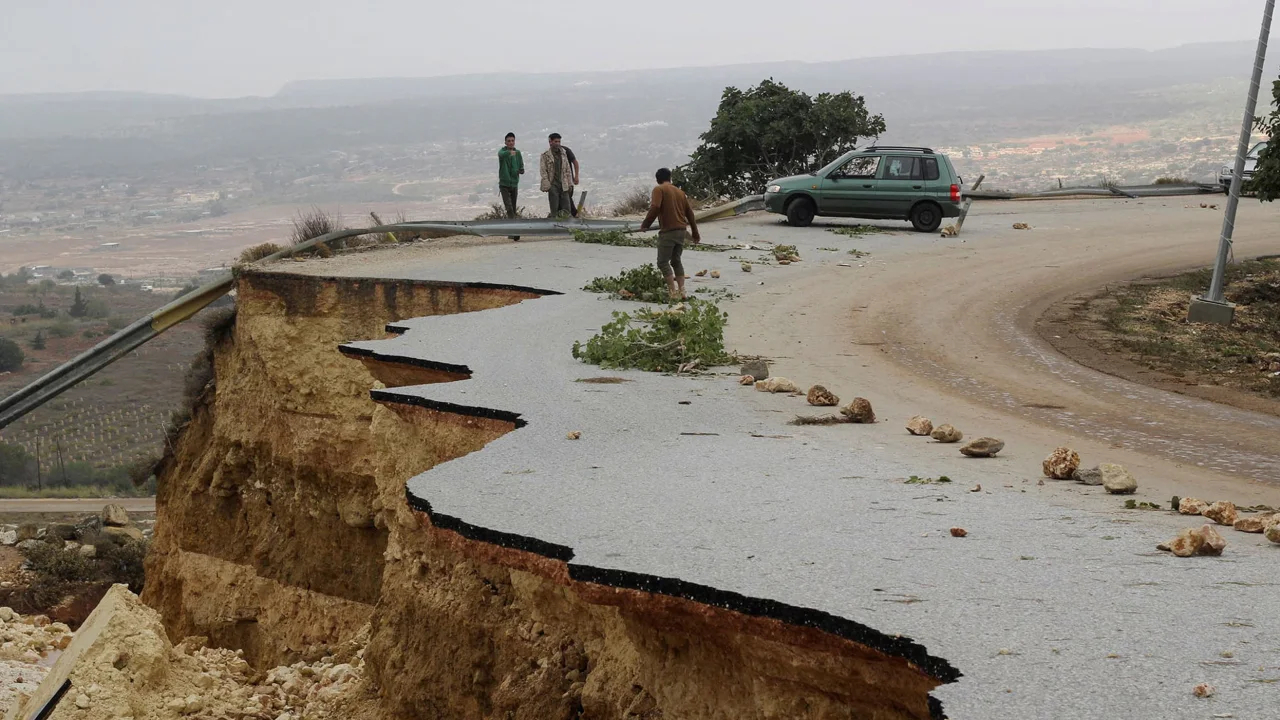
[…] Also Read Libya Flood […]
[…] Also Read Libya […]
[…] also read Libya Flash Floods […]